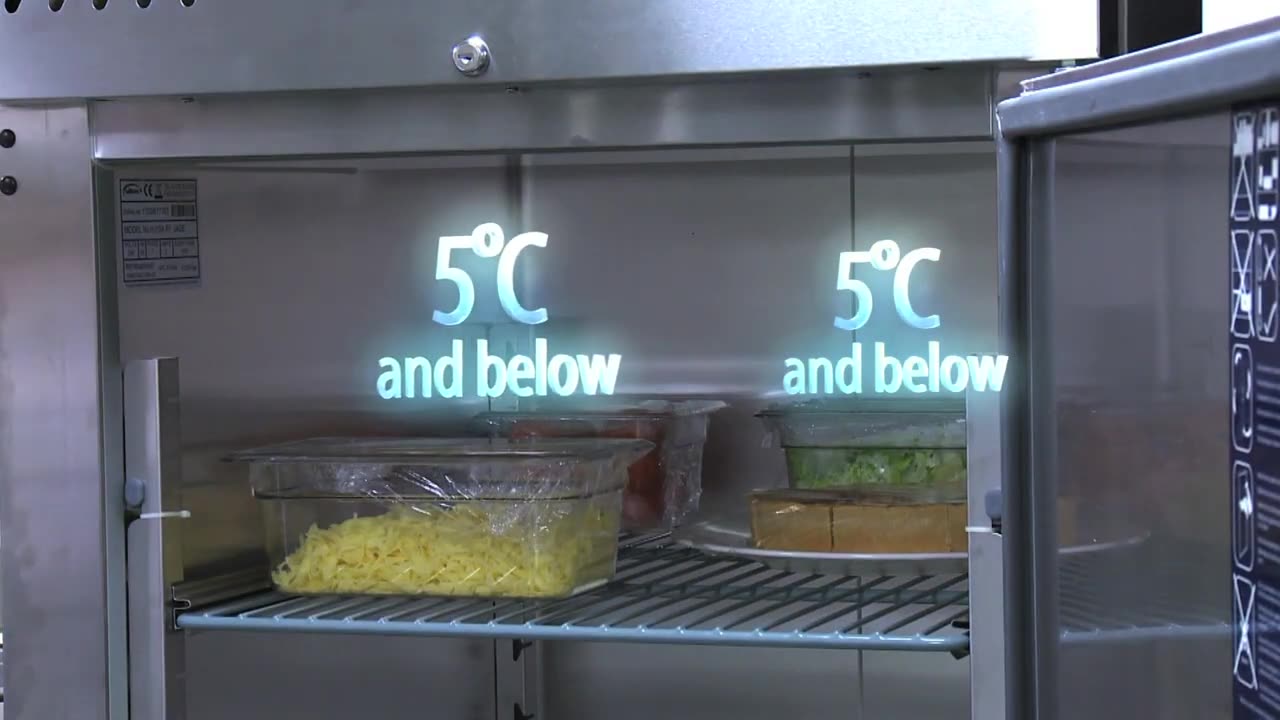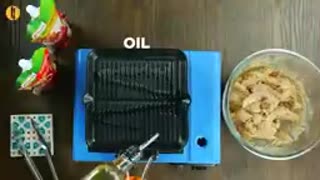Premium Only Content

Food safety coaching (Part 7)_ Chilled storage and display
### **Food Safety Coaching (Part 7) – Chilled Storage and Display**
Proper chilled storage and display are critical for maintaining food safety, especially for perishable and high-risk foods. Storing and displaying food at the correct temperature slows bacterial growth and preserves freshness, ensuring food remains safe for consumption.
---
### **Why Chilled Storage and Display Matter**
1. **Prevents Bacterial Growth:**
- Harmful bacteria thrive in the "danger zone" between **5°C and 63°C**. Keeping food below 5°C inhibits bacterial multiplication.
2. **Preserves Quality:**
- Proper chilling maintains food’s texture, taste, and nutritional value.
3. **Reduces Waste:**
- Slows spoilage, extending the shelf life of food.
---
### **Best Practices for Chilled Storage**
#### **1. Maintain the Right Temperature**
- Refrigerators should operate at **≤5°C**.
- Use a **thermometer** to monitor temperature regularly.
- Freezers should operate at **-18°C or below** for frozen foods.
#### **2. Store High-Risk Foods Correctly**
- Place perishable items (e.g., meat, poultry, dairy, seafood) in the coldest part of the fridge.
- Keep cooked and ready-to-eat foods separate from raw foods to prevent cross-contamination.
#### **3. Use Airtight Containers or Wraps**
- Store food in sealed containers or wrap them tightly to prevent moisture loss and contamination.
#### **4. Avoid Overloading the Fridge**
- Overcrowding prevents cold air from circulating, leading to uneven cooling.
#### **5. Organize Based on Food Type**
- Place raw meat, poultry, and seafood on the bottom shelf to prevent juices from dripping onto other foods.
- Store ready-to-eat foods and leftovers on the top shelves.
#### **6. Label and Date Stored Food**
- Mark containers with the date of storage to track freshness.
- Follow the **First In, First Out (FIFO)** principle to use older food first.
---
### **Best Practices for Chilled Display**
#### **1. Maintain Display Temperatures**
- Ensure chilled display units keep food at **≤5°C**.
- Use built-in thermometers to monitor and adjust the temperature as needed.
#### **2. Regularly Check Food Temperatures**
- Use a probe thermometer to verify food temperatures, especially for prepackaged or bulk items.
#### **3. Avoid Overfilling Display Units**
- Allow cold air to circulate around the food to maintain consistent temperatures.
#### **4. Rotate Stock Frequently**
- Replace displayed food with fresh stock regularly to maintain quality and safety.
- Remove expired or potentially unsafe items immediately.
#### **5. Protect Food from Contamination**
- Use sneeze guards, covers, or lids to shield food from physical contamination.
- Ensure packaging is intact for prepacked items.
#### **6. Monitor and Clean Display Units**
- Clean display units regularly to prevent the buildup of spills, debris, or ice.
---
### **Foods That Require Chilled Storage and Display**
- **High-Risk Foods:**
- Raw and cooked meat, poultry, and seafood.
- Dairy products such as milk, cheese, yogurt, and cream.
- Ready-to-eat foods like sandwiches, salads, and deli meats.
- Pre-cut fruits and vegetables.
- **Packaged Foods with “Keep Refrigerated” Labels:**
- Always follow manufacturer instructions for chilled storage.
---
### **Common Mistakes to Avoid**
1. **Storing Hot Food Directly in the Fridge:**
- Hot food raises the internal temperature of the fridge, putting other items at risk. Cool hot food quickly before refrigerating.
2. **Ignoring Temperature Fluctuations:**
- Regularly check fridge and display unit temperatures to ensure they are within safe limits.
3. **Overcrowding Storage Areas:**
- Crowded fridges and displays block airflow, leading to uneven cooling.
4. **Relying on Visual Inspections Alone:**
- Food may appear fine but could be unsafe if stored at the wrong temperature.
---
### **Key Tips for Safe Chilled Storage and Display**
- Use separate fridges or sections for raw and ready-to-eat foods.
- Regularly service and maintain refrigeration and display equipment.
- Train staff on proper handling, storage, and display practices.
- Keep records of temperature checks for quality assurance.
---
### **Key Reminder**
Proper chilled storage and display are essential for food safety. Always prioritize maintaining appropriate temperatures, preventing cross-contamination, and ensuring equipment functions effectively.
Would you like specific advice on chilled storage for a particular type of food or scenario?
-
 1:35
1:35
HSESafetyInformation
7 months agoMutton Chops two ways- baked & grilled Recipe by Food Fusion (Eid Recipe)
67 -
 LIVE
LIVE
Benny Johnson
2 hours agoBREAKING: Left-Wing Terrorist Attack at ICE Facility, Sniper Opens Fire | Kimmel Sobs in Non-Apology
6,387 watching -
 LIVE
LIVE
The Big Mig™
3 hours agoTrump, Chuck Schumer & Hakeem Jeffries Can Go Pound Sand!
5,916 watching -
 1:09:27
1:09:27
The Kevin Trudeau Show Limitless
1 hour agoHow Energy, Mindset, And Marketing Really Work: Kevin Trudeau Reveals All!
5.9K1 -
 1:35:46
1:35:46
Dear America
2 hours agoGoogle ADMITS CENSORING Under Biden!! WE WERE RIGHT!! + The UN Sabotaged Trump!!
118K62 -
 LIVE
LIVE
Badlands Media
9 hours agoBadlands Daily: September 24, 2025
3,410 watching -
 2:15:08
2:15:08
Matt Kohrs
11 hours agoMarket Open: Bounce or Breakdown? LIVE Trading & Breaking News
27.6K1 -
 LIVE
LIVE
Wendy Bell Radio
7 hours agoThe Left Lies About Everything
6,576 watching -
 1:59:31
1:59:31
FusedAegisTV
11 hours agoTGS 2025 Capcom Online Special Program REACTION 9.24.2025 | FusedAegis Presents
10.9K -
 1:12:16
1:12:16
WickedVirtue
4 hours agoCharlie Kirk's Influence -Wicked Wednesday 9/24
9.2K2